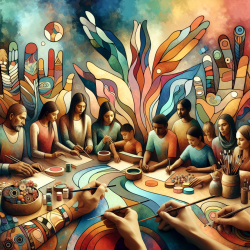The importance of creating culturally sensitive environments for First Nations youth to express their pain cannot be overstated. Recent research highlights the need for practitioners to develop skills that foster safe spaces where these young individuals can share their experiences and emotions freely. By understanding the unique ways in which First Nations youth express pain, practitioners can improve their assessment and treatment approaches.
The Research Behind Safe Spaces
The study titled Creating a safe space for First Nations youth to share their pain utilized community-based participatory action methodology. It involved 42 youth from four First Nation communities who expressed their perspectives on pain through Talking Circles and art workshops. This innovative approach allowed researchers to gather insights into both physical and emotional pain expressions.
The findings revealed that while physical pain was often discussed verbally in Talking Circles, emotional pain was more vividly expressed through art. Youth were more comfortable using artwork to depict feelings of loneliness, sadness, and resilience. This highlights the importance of incorporating culturally relevant methods when working with Indigenous populations.
Implementing Research Outcomes in Practice
Practitioners looking to enhance their skills should consider the following strategies based on the research outcomes:
- Create Culturally Safe Environments: Establish trust and build relationships with First Nations youth by respecting their cultural backgrounds and traditions. Use familiar settings and involve community members in the process.
- Incorporate Art-Based Methods: Encourage the use of art as a medium for expression. Art allows youth to convey complex emotions that may not be easily articulated verbally.
- Listen Actively: Pay attention to both verbal and non-verbal cues. Understand that silence or stoicism may be a cultural expression of pain.
- Foster Open Communication: Use open-ended questions and storytelling to facilitate dialogue. Allow youth to share their experiences at their own pace.
The Role of Further Research
This study underscores the need for ongoing research into culturally sensitive practices in healthcare settings. Practitioners are encouraged to engage with Indigenous communities and collaborate on research initiatives that prioritize cultural safety and understanding. By doing so, they can contribute to improved health outcomes for First Nations youth.
The journey towards creating truly inclusive healthcare environments requires dedication and a willingness to learn from diverse perspectives. As practitioners continue to refine their skills, they play a crucial role in empowering First Nations youth to express their pain and find healing within their communities.
To read the original research paper, please follow this link: Creating a safe space for First Nations youth to share their pain.










